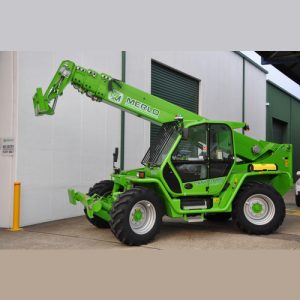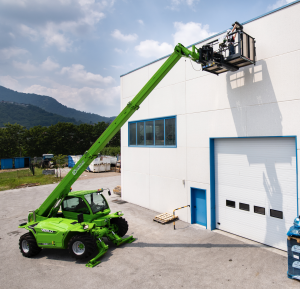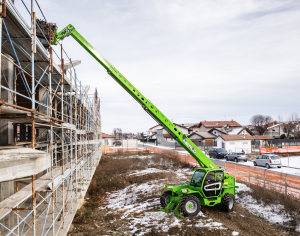The Future of Construction: Unpacking the Versatility of Telehandler
I. Introduction
As you navigate the bustling landscape of Australia’s construction industry, it’s hard to ignore the dynamic change unfolding. Yet, amidst the scaffoldings, cranes, and concrete mixers, one piece of equipment stands out, transforming how we think about construction – the telehandler.
Telehandlers, or telescopic handlers, are more than just new construction players. They are a game-changer. Their lifting capacity and load-lifting capabilities surpass that of traditional forklifts, offering a blend of power, versatility, and precision that is reshaping the industry.
In this blog post, we’ll uncover the unique features of telehandlers, their role in modern construction, and their potential to catapult the industry into a future of enhanced efficiency and increased safety.

II. Understanding Telehandlers
So, what exactly is a telehandler? Picture a conventional forklift but with a bucket attachment and a boom – a telescopic one. This versatile machine can lift loads to great heights and transport heavy loads for extra distances across job sites. With a simple, quick hitch design, it can switch between different attachments, making it adaptable.
With various steering modes, telehandlers can navigate restricted sites with ultimate manoeuvrability. They can handle palletised cargo, work in agriculture sectors, and perform tasks that typically require two or more machines, all with world-beating build quality.

III. The Role of Telehandlers in Modern Construction
Today, telehandlers are integral to the construction industry. Their ability to lift, lower, and safely transport loads makes one machine an asset in any construction job site. The telehandler range ranges from lifting heavy materials to accessing restricted areas. Moreover, it continues to expand, thanks to a continued commitment to innovation.
Take, for instance, the PANORAMIC project. Here, telehandlers proved their worth, quickly lifting loads and transporting materials across the job site, enhancing productivity and safety.
IV. The Versatility of Telehandlers
The Merlo Telehandler P40.17 stands out with its incredible performance and versatility among the telehandler range. It’s not just the machine’s lifting capacity that impresses, but its enviable versatility. This machine performs precisely and efficiently, whether equipped with pallet forks for material handling or a bucket attachment for heavier tasks.
And it’s not just the P40.17. Their various other attachments will further amplify the versatility of telehandlers. From buckets and even palletised cargo forks to more specialist application packages, these other attachments enable telehandlers to perform many tasks, reducing the need for multiple on-site machines.
Telehandlers offer more than just a solution to your current construction challenges. They provide a pathway to a more efficient, safer, and cost-effective future. Embracing the telehandler concept could be the competitive edge your project needs. And as we look ahead, it’s clear that the end of construction is synonymous with the future of telehandlers.

V. Future Trends and Predictions
The relentless quest for improved efficiency and safety on construction sites fuels the surge in telehandler usage. In addition, the industry’s shift towards automation and intelligent technology is increasing the demand for machines with great versatility and world-beating build quality, like the telehandler.
In the future, we predict that two machines and the telehandler will become an even more dominant players in construction. As projects become more complex and time-sensitive, the ability of qualified operators of a single machine to perform multiple tasks, from transporting heavy loads to accessing restricted sites, will be invaluable.
And let’s remember about technological advancements. As we see a continued commitment to telehandler design and function, new technologies like AI, robotics, and IoT will usher in an era of telehandlers with superior performance, increased safety, and even more enviable versatility.
VI. The Impact on Construction Efficiency and Safety
By reducing the need for multiple machines, telehandlers streamline operations, speeding up project timelines and reducing competitive running costs. With their diverse range of attachments, telehandlers are equipped to handle any task, enhancing efficiency and productivity.
But it’s not just about efficiency. Telehandlers, operated by qualified operators, also play a significant role in promoting job site safety. Their simple, quick hitch design, ultimate manoeuvrability, and height machines keep workers safer, reducing the risk of accidents with conventional forklifts.
In the long run, the versatility of telehandlers, combined with their top residual values and accompanying vast choice of attachments, will lead to key benefits and substantial cost savings. Imagine having one machine that can perform the tasks of two machines or even three devices. That’s the power of telehandlers.
Conclusion
We’ve explored the unique features of telehandlers, their vital role in modern construction, and the transformative impact they’re set to have on the industry’s future. From the Merlo Telehandler P40.17 to the telehandler’s concept, it’s clear that these machines are revolutionising construction.
As we look to the future, it’s evident that telehandlers are not just a trend but a long-term solution for efficiency, safety, and cost savings in the construction industry.
Stay informed about the latest developments and consider the benefits of incorporating telehandlers into your projects. Embrace the future of construction so contact us today for a quote or for a demonstration.
Frequently Asked Questions
Is a telehandler the same as a traditional forklift?
No, a telehandler is not merely a conventional forklift. While both machines are designed to lift loads, a telehandler’s lifting capacity, steering modes, and load-lifting capabilities surpass a traditional forklift. In addition, unlike the rigid mast of a forklift, its boom can extend, providing extra distance and height. This incredible versatility makes it a one-machine solution for many tasks that would otherwise require multiple machines.
What is a telehandler used for?
A telehandler, or telescopic handler, is designed to transport heavy loads, especially in challenging terrains where conventional forklifts may fail. This job site hero can be equipped with pallet forks or bucket attachments, making it a versatile choice for material handling in the construction, agriculture, and more. Its ability to lift loads to significant heights and deliver them safely to their destination underscores the telehandler’s key benefits.
What is another name for a telehandler?
A telehandler is also known as a telescopic handler, reflecting its unique ability to extend its boom, reaching places traditional forklifts can’t. Other names include a reach forklift, boom lift, or simply a ‘tele’, all referring to its diverse capabilities and versatility to a job site.
Do you need a Licence to operate a telehandler in NSW?
Yes, you do. If the telehandler’s lifting capacity exceeds 3 tonnes, you need a high-risk work licence in New South Wales. This licence ensures that only qualified operators handle this powerful equipment, maintaining increased safety on the site.
Can you drive a telehandler with a forklift Licence in Victoria?
Although a telehandler shares similarities with a forklift, a forklift licence alone does not qualify you to operate a telehandler in Victoria. A telehandler has specific handling and manoeuvring techniques, and understanding the range of attachments requires comprehensive training.
Is a telehandler a Class 7 forklift?
A telehandler is classified as a Class 7, a rough terrain forklift. It’s designed for ultimate manoeuvrability across different terrains, from accessing restricted sites in construction to navigating uneven ground in agricultural settings.
Can a telehandler lift people?
Yes, a telehandler can lift people with the right attachments, such as a man basket. However, this should only be done following strict safety guidelines, and the machine must be equipped with the necessary safety features, ensuring continued commitment to job site safety.
What is the difference between a telehandler and a boom lift?
While both machines can elevate loads, they serve different primary functions. A boom lift is designed to lift workers to high elevations, whereas a telehandler focuses on material handling, able to lift and transport heavy loads across job sites. However, a telehandler’s boom can extend, providing extra reach, and it can be equipped with various attachments, showcasing its enviable versatility.
Do you need a training for a telehandler?
Absolutely. Operating a telehandler requires a specific skill set. Training covers everything from understanding the different attachments, handling and manoeuvring the machine, and maintaining site safety. Ensuring that only trained, qualified operators take this equipment is crucial.
How much does a telehandler earn in australia?
In Australia, a telehandler operator can make between AUD 60,000 to AUD 80,000 annually. However, these figures can vary based on the operator’s experience, the complexity of the tasks, and the specific industry.

